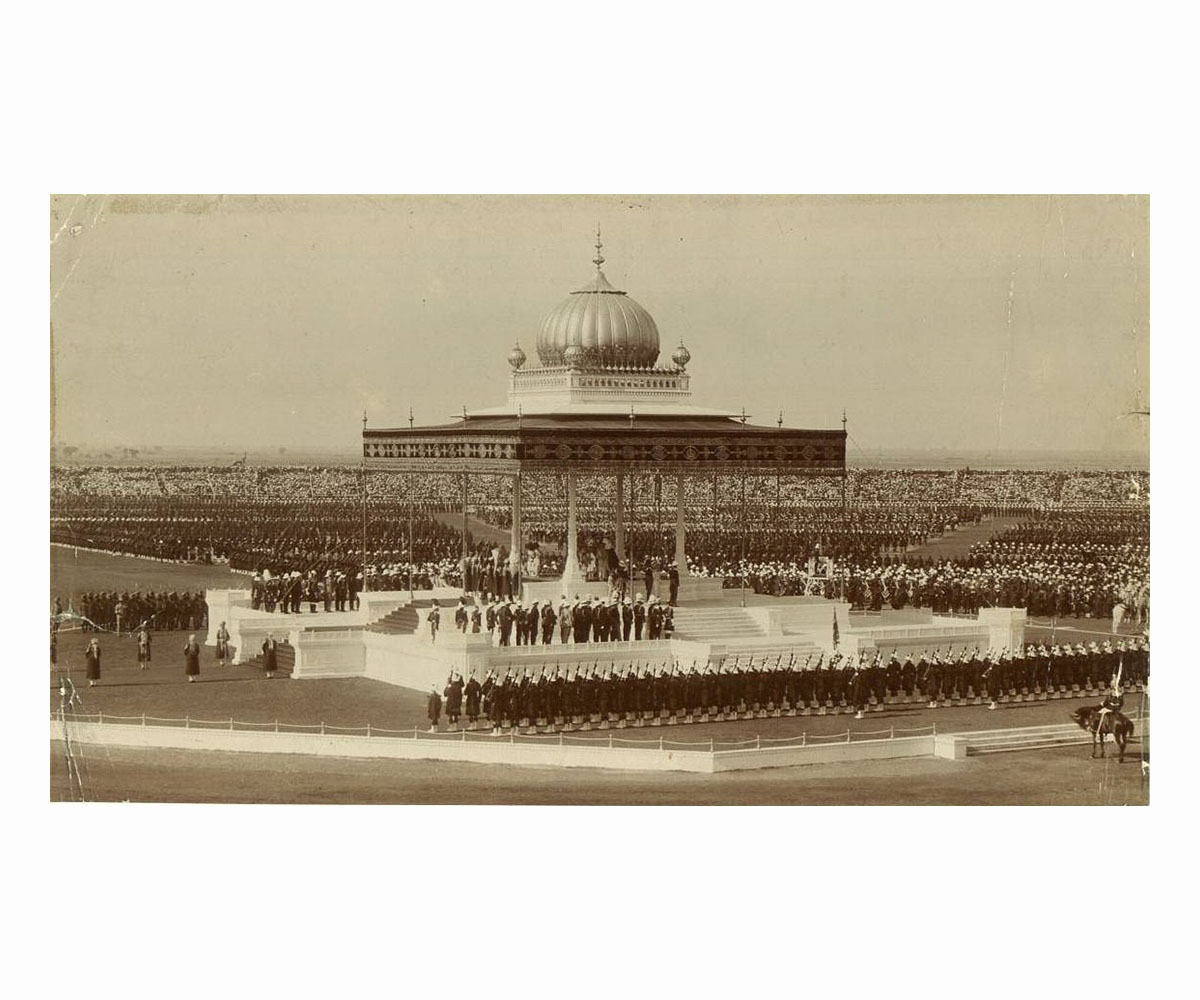STORIES
When Queen Victoria Tried to “Place Her Authority on the Mughal Throne”
A sea of tents, 84000 attendees and festivities that lasted for two weeks — the first Delhi Durbar, organised in 1877 by Lord Lytton, the Viceroy of India was a spectacle on an unprecedented scale. Held in Delhi’s Coronation Park, the Durbar was representative of the wealth and power of the British Empire. Maharajas, princes, nawabs and British imperial officers and their families all decked out in their finest clothes and jewellery attended the Durbar, while the Indian army and military bands held multiple parades.
The event was held in honour of Queen Victoria, and the highlight of the ceremonial proceedings was that the Queen would officially be proclaimed the Empress of India or Qaisar-i-Hind. The Empress herself would not be in attendance, because, according to some sources, she was put off by the “heat and insects.” Despite that, this marked the first occasion when royalty from across India came together to pay homage to the absent Queen.
The Durbar, along with its counterpart, the Royal Tour — in which royalty or the Viceroy would go to various principalities and territories on a formal visit — may seem like British imperial traditions, but their origins tell us otherwise. To appease local elites and masses alike, the British created the Durbars as an appropriation of local culture, borrowing from traditions put in place by the Mughals and other regional rulers, to create their own rituals.
Their reasoning behind this was simple. The Viceroy, Lord Lytton was strongly convinced that, in his words, “ in Indian minds, small favours and marks of honour … are quite as highly prized.” He proposed that proclaiming Queen Victoria the Empress of India would “place her authority upon the ancient throne of the Moguls, with which the imagination and tradition of [our] Indian subjects associate the splendour of supreme power.” As the historian Eugenia Herbert describes, the Durbars were an attempt by the British to assume the mantle of the Mughals, by “seizing the rituals of empire of their erstwhile enemies.”
The locals were slightly less effusive than Lytton would have hoped for. Here is a letter sent to an Indian newspaper from Bahmangi Dosbhai of Bombay that describes his feelings towards the event:
O! What would the great Akbar say,
Should he appear upon that day?
No doubt he’d feel a little sad
And think the world were going mad
On a more serious note, there were other letters highlighting famines and other instances of Indians suffering hardship under an indifferent administration in various parts of India at the same time the Delhi Durbar was being held. The Indian press almost unanimously agreed that the ceremony was an enormous drain on resources. The Durbars, however, continued, with events taking place in 1903 and 1911.
Even as they seemed to alienate a vast population of Indians, they were extensively documented by the international press and photographs and films of the event were widely distributed. In fact, in 1904, Luna Park — an amusement park in Coney Island, New York whose inauguration coincided with the 1903 Durbar — opened a new segment dedicated to a replication of the Durbars, complete with elephants, parades, camels, dancers and other symbols of the ‘Orient’ which had captivated the West. The spectacle was hugely popular, receiving more than 5,000 visitors, but was soon shut down as it was too expensive to run. Today, surviving postcards from Luna Park and posters from various circus acts allow us a glimpse of the ‘exotic’ Durbar phenomenon that continued to be adapted and reproduced for many years. The fireworks, dancing troupes, processions of ornamented royal elephants and various exhibitions that were part of the celebrations projected an exotic idea of India to the rest of the world — one that still seems to hold sway today.








